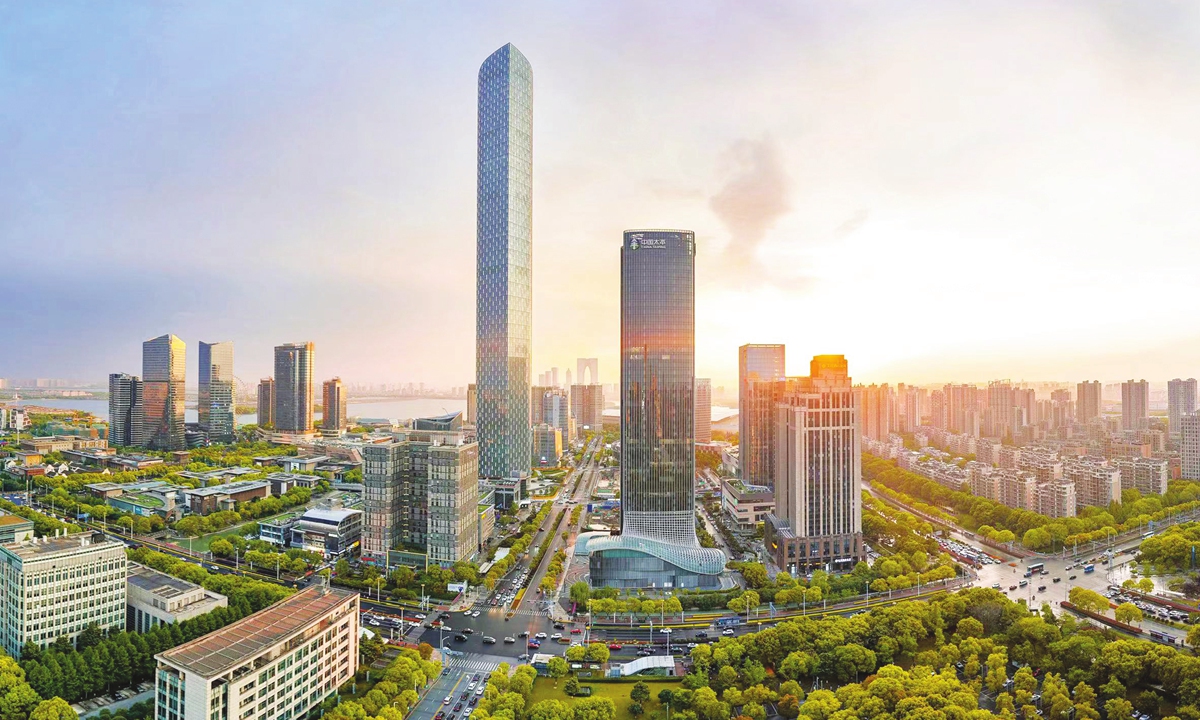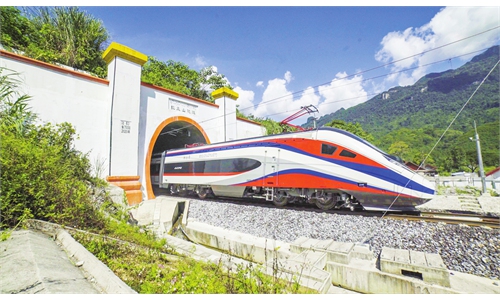China, Singapore expected to expand depth, scope of BRI cooperation on PM Lee’s visit


A view of the Suzhou Industrial Park Photo: Courtesy of Suzhou Industrial Park publicity authority
Last week, a special rail express train loaded with a consignment of 50 new energy vehicle (NEVs) departed from Southwest China's Chongqing Municipality and arrived at a train station in Qinzhou, South China's Guangxi Zhuang Autonomous Region after a 31-hour journey.
The consignment was then transferred onto a vessel docked at the Qinzhou port, after which it was shipped to Europe, marking the very first NEV special sea-rail combined transportation express delivery operated under the western New International Land-Sea Trade Corridor - a signature China-Singapore cooperation project under the Belt and Road Initiative (BRI). The corridor has risen to become a major trade channel between western Chinese provinces and regions and ASEAN members, with Chongqing and Singapore serving as twin transportation hubs.
The inauguration represents a new step in the further expansion of the corridor and in further facilitating regional connectivity after auto export express trains started regular operations through the passage in 2022.
In December, a special fruit cold-chain train departed Laos' capital of Vientiane, entered China via the Mohan border port in Southwest China's Yunnan Province, and headed for Chongqing. Carrying Laos' bananas and Thai longans on board, it was also the first inland fruit cold chain train of the China-Laos Railway launched under the New International Land-Sea Trade Corridor.
With the help of the corridor, fruit, rice, fresh food, and other products from ASEAN members can quickly be put on shelves in Chinese supermarkets while cars, spare parts, and other products made in western China can enter the ASEAN market.
And these are just examples of how the corridor, which was inaugurated in 2017 under the support of both the Chinese and Singaporean governments, has created an inclusive global BRI transportation network that not only connects ASEAN members with western China but also stretches further to link the region with Central Asia and the European continent.
As Singapore's Prime Minister Lee Hsien Loong is on a six-day official visit to China starting from Monday, it is expected that the visit will expand the depth and scope of bilateral cooperation under the BRI framework, such as in broader areas of third-market cooperation, accounting and financial services, and digital partnerships, analysts said.
Among ASEAN members, Singapore was the first to support and participate in China's reform and opening-up policy. It is also among the first to publicly voice support for the China-proposed BRI.
Levying the advantage
An executive from the China-Singapore (Chongqing) Demonstration Initiative on Strategic Connectivity Administrative Bureau (CCIB), which is responsible for implementing the China-Singapore (Chongqing) Demonstration Project on Strategic Connectivity including the corridor, told the Global Times on Thursday that the route has given full play to the advantages born from the Chinese and Singaporean sides.
"Singapore has a geographic advantage, and is also an important global center for trade, finance and shipping. China is also advancing the development of its western regions. So the cooperation produces a radiation and driving effect in constructing a new landscape in global connectivity," the executive said.
China's advantage is also manifested in its rich experience and technology in infrastructure connectivity, observers said, adding that Singapore's unique position within the BRI also stems from its professional services in the fields of finance, law, and accounting.
The New International Land-Sea Trade Corridor now connects 119 countries and regions, with all ASEAN countries in the coverage through three logistics forms: Sea-rail combined transportation, international railway combined freight trains, and cross-border highway shuttle buses.
The executive said that with the implementation of the RCEP and the opening of the China-Laos Railway, the corridor has seen more active participation from companies in ASEAN members.
For example, Chinese, Singaporean, and Thai companies joined in the cooperation of the Vientiane logistic park project, and the Thai petroleum company Nathalin Group also signed on to join the route's supply chain partnership, the executive said.
In 2022, Chongqing sent 148,000 twenty-foot equivalent units (TEUs) via the New International Land-Sea Trade Corridor, up 32 percent year-on-year, according to data provided by the CCIB.
In addition to the corridor, China and Singapore have three other intergovernmental cooperation projects in Suzhou, Tianjin, and Guangzhou, the scales of which are all unique in terms of China's foreign cooperation, reflecting the special nature of the relationship between the two countries, Yu Hong, senior research fellow at the East Asian Institute at the National University of Singapore, told the Global Times.
The China-Singapore Suzhou Industrial Park was set up in 1994 under the approval of the State Council, China's cabinet. As of 2022, Singaporean companies have invested 350 projects (in operation) in the park with a registered foreign investment of $4.38 billion, according to a statement the park sent to the Global Times.
"The park has built industrial clusters with characteristics including a new generation of information technology, high-end equipment manufacturing, biomedical production, nano technology application, and artificial intelligence," the statement said.
One focal point of the blueprint is to support Singaporean companies to scale up investment in the cooperative park's strategic rising industries, and push for the building of China-Singapore life science and integrated circuit industry parks. It will also promote green and digital cooperation by introducing Singaporean energy-saving and environmental protection technology and relevant professional institutions, the statement noted.
Future cooperation
As BRI celebrates its 10th anniversary this year, observers envisioned that China-Singapore cooperation under the initiative will also be ushered into a new era, moving toward high-quality and sustainable development.
"The prospect for further China-Singapore cooperation in the third market is quite bright, not only in Southeast Asia but also in Africa, the Middle East, and even Central Asia," Xu Liping, director of the Center for Southeast Asian Studies at the Chinese Academy of Social Sciences, told the Global Times on Thursday.
The joint building of a "digital silk road" will also be a highlight in future BRI cooperation.
China said in November 2021 that it would apply to join the Digital Economy Partnership Agreement (DEPA) which currently covers Chile, New Zealand, and Singapore.
It is expected that during Lee's visit, China, which is home to a vibrant digital economy, and Singapore will reach consensus on enhancing cooperation in DEPA-related fields, according to Xu.
Also, as regional integration accelerates, more Chinese companies looking to expand their BRI footprint into ASEAN markets will set up branches in Singapore, analysts said.



